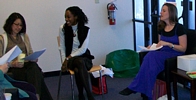|
|
 Acne (1,500) Acne (1,500)
 Addictions (1,500) Addictions (1,500)
 Advice (1,500) Advice (1,500)
 Allergies (1,092) Allergies (1,092)
 Alternative Medicine (1,500) Alternative Medicine (1,500)
 Anti Aging (1,500) Anti Aging (1,500)
 Breakup (1,500) Breakup (1,500)
 Cancer (1,499) Cancer (1,499)
 Dental Care (1,500) Dental Care (1,500)
 Disabilities (1,500) Disabilities (1,500)
 Divorce (1,500) Divorce (1,500)
 Elderly Care (1,498) Elderly Care (1,498)
 Goal Setting (1,500) Goal Setting (1,500)
 Hair Loss (1,500) Hair Loss (1,500)
 Health and Safety (1,497) Health and Safety (1,497)
 Hearing (1,500) Hearing (1,500)
 Law of Attraction (1,499) Law of Attraction (1,499)
 Marriage (1,500) Marriage (1,500)
 Medicine (1,497) Medicine (1,497)
 Meditation (1,499) Meditation (1,499)
 Men's Health (1,500) Men's Health (1,500)
 Mental Health (1,500) Mental Health (1,500)
 Motivational (1,500) Motivational (1,500)
 Nutrition (1,495) Nutrition (1,495)
 Personal Injury (1,499) Personal Injury (1,499)
 Plastic Surgeries (1,500) Plastic Surgeries (1,500)
 Pregnancy (1,496) Pregnancy (1,496)
 Psychology (1,500) Psychology (1,500)
 Public Speaking (1,500) Public Speaking (1,500)
 Quit Smoking (1,500) Quit Smoking (1,500)
 Religion (1,499) Religion (1,499)
 Self Help (1,500) Self Help (1,500)
 Skin Care (1,500) Skin Care (1,500)
 Sleep (1,500) Sleep (1,500)
 Stress Management (1,500) Stress Management (1,500)
 Teenagers (1,492) Teenagers (1,492)
 Time Management (1,500) Time Management (1,500)
 Weddings (1,500) Weddings (1,500)
 Wellness (1,500) Wellness (1,500)
 Women's Health (1,500) Women's Health (1,500)
 Women's Issues (1,500) Women's Issues (1,500)
|
Slavery is still with us even in the 21st century. Although we tend to think of slavery as occurring in distant places, such as the Sudan, trafficking in human beings exists today right here in America, perhaps in your town or city. Each year, between 600,000 and 800,000 people are trafficked worldwide in the global slave trade. Here at home, 14,500-17,500 men, wo men and children are trafficking into the United States each year and made, through force, fraud or coercion, to engage in prostitution, pornography, domestic servitude, sex entertainment, sweatshops or migrant farm labor. Victims of human trafficking are typically unfamiliar with American culture and often do not speak English. Frequently they are deprived of passports, money and identification that might permit them to escape their captors. They may be held in conditions of isolation and confinement, but they may also have frequent contact with the outside world. These “strangers in a strange land” are uniquely vulnerable to being controlled by their captors. Often victims come from countries where police and government officials are corrupt and are not on the side of the vulnerable. Traffickers exploit this suspicion of authority figures and instill in their victims a deep distrust of American law enforcement and government. If victims do not have legal immigration status (as is often the case), traffickers tell them that authorities will arrest, imprison and deport them if they dare to seek help. Traffickers also are known to threaten harm to family members of the victims back home. In December 2003, President Bush signed the Trafficking Victims Protection Reauthorization Act. The act set aside $200 million a year to fight human trafficking and strengthen law enforcement tools used in the fight against trafficking. The 2003 Act also led my office at the U.S. Department of Health and Human Services, the Administration for Children and Families, to launch the Rescue and Restore Victims of Human Trafficking campaign to help identify and assist victims of human trafficking. The campaign’s goal is to identify, rescue, and aid trafficking victims so they can undertake to rebuild their lives and be restored to a condition of human dignity. In 2004, we launched the campaign in targeted cities and regions nationwide. At present, Rescue and Restore coalitions have been established in 14 cities, including San Francisco, Chicago, Los Angeles, Atlanta, Seattle, Minneapolis/ St. Paul, and Orlando. Rescue and Restore coalitions bring together local networks of health care and social service providers, faith-based and community organizations, and law enforcement agencies to locate, identify and assist victims. A key part of our strategy for finding more victims of human trafficking is to alert persons and organizations likely to encounter victims about the phenomenon of human trafficking. Who are these? Certainly everyone in the health care and counseling professions could very well encounter a trafficking victim in the course of his or her work. So I urge you to “Look Beneath the Surface,” to be vigilant for the clues that someone might be a victim of trafficking, and to ask the right questions if you suspect a case of trafficking. Often trafficking victims are hidden in plain sight. Does a person appear to be isolated or under the control of someone else? Are they transported to and from a place of work and do not appear to have freedom of movement? Do they show signs of physical abuse or sexually transmitted inflections? Do they lack a passport or other identification? Are children accompanied by people other than parents or family members? These are some of the warning signs of trafficking. Christian Counselor is always available to help you out. Further information about trafficking can be obtained from the trafficking information and referral hotline at 1-888-373-7888. This toll-free number, staffed 24 hours a day, is intended to help callers determine whether they have encountered a victim of human trafficking and to connect victims to a local organization that is prepared to help them with the supportive services they need. In cooperation with our federal partners, the Department of Health and Human Services is working hard to find and serve victims of human trafficking. But the solution to this grave social problem can only be found in a unique collaboration between the federal government, state and local governments, local law enforcement, faith-based and community groups, and professionals who encounter victims. Only by working together can we end this modern form of slavery. _Wade F. Horn, Ph.D., is the Assistant Secretary for Children and Families in the U.S. Department of Health and Human Services._
|
|
|



